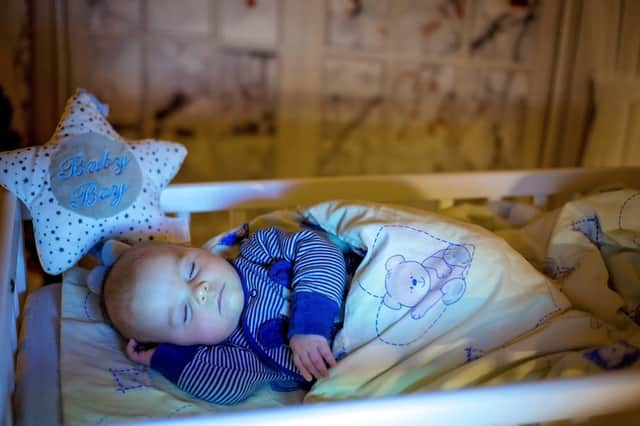Safe sleep recommendations have not stopped cot deaths


An American study has shown that sudden deaths in newborns have not fallen in the last twenty years despite safe sleep guidelines.
In 1992 the American Academy of Pediatrics (AAP) released its "back to sleep" recommendations but a drop in tragedies did not occur in infants in the first month of life.
Advertisement
Hide AdAdvertisement
Hide AdSeveral factors may have contributed to the persistent risk of sudden unexpected infant death (SUID) during the first days and weeks of life, say scientists.
These could include some of the advice around breastfeeding as well as guidelines on the use of dummies.
Senior author Professor Ronald Kleinman, a paediatrician at Harvard Medical School, said: "Overall, we think it is possible certain neonatal practices resulting in unsafe sleep circumstances both during and after the birth hospitalisation, along with pacifier avoidance, may have inadvertently interfered with the implementation of safe-sleep messages and prevented a decrease in the death rate."
SUID is the shock death of an apparently healthy, full term infant under the age of one for no immediately apparent reason.
Advertisement
Hide AdAdvertisement
Hide AdIt includes cot death, or SIDS (sudden infant death syndrome) and deaths found to result from accidental strangulation or suffocation caused by unsafe bedding, becoming trapped between a mattress and a wall, or sleeping with a parent or another adult who inadvertently blocks the infant's airway.
High figures
Lead author Prof Joel Bass, chair of the Newton-Wellesley Hospital department of paediatrics, Massachusetts, said: "The frequency of SUID in the first month of life is higher than generally recognised, at an average of 444 cases per year in the US, of which 66 per year occur on the first day and 130 occur in the first week of life.
"There actually has been a dramatic and unexpected increase in deaths attributed to suffocation and asphyxiation in both newborns and infants up to one year old, and these deaths are potentially preventable."
Using Centers for Disease Control and Prevention records of births and infant deaths from 1995 through 2014, the researchers analysed deaths occurring in the neonatal (first 27 days of life) and postneonatal (28 days to 1 year) periods.
Advertisement
Hide AdAdvertisement
Hide AdWhile the rates of postneonatal SUID declined nearly 23 percent from 1995 to 2002, after which they remained stable, rates during the neonatal period remained unchanged.
During that 20-year period the percentage of SUID cases attributed to suffocation or strangulation increased in both age groups - from around two per cent to nearly 23 per cent in the neonatal period and from 3.4 per cent to almost 25 per cent in the postneonatal period.
Almost 30 per cent of neonatal deaths occurred during the first six days of life.
Unexpected collapse
Prof Bass said many may be the result of sudden unexpected postnatal collapse (SUPC).
Advertisement
Hide AdAdvertisement
Hide AdThis is a sudden collapse - sometimes with full respiratory and cardiac arrest - of an apparently healthy newborn born at more than 35 weeks gestation.
SUPC leads to death in around half the cases and serious neurological consequences in half of survivors.
The researchers believe several recommended practices designed to promote breastfeeding, the importance of which they fully support, may inadvertently contribute to the risks.
The practice of skin-to-skin care, in which an infant is placed in a prone position on the mother's chest has been noted in other reports to have a strong association with SUPC.
Advertisement
Hide AdAdvertisement
Hide AdIf the mother is also exhausted or sedated, she may even fall asleep with the infant on her chest resulting in co-bedding, an established risk factor for SIDS.
Pacifier fears
Another recommendation that may have unintended consequences is avoiding the use of pacifiers, which some breastfeeding advocates suggest eliminating and the AAP advises should not be used until breastfeeding is well established.
As pacifier use is strongly associated with a reduced risk of SIDS, the authors feel that recommendation should be reconsidered.
Since breastfeeding is also associated with a reduced risk of SIDS, the authors recommend that safe-sleep education be integrated with lactation advice.
Advertisement
Hide AdAdvertisement
Hide AdAdded Prof Kleinman: "Future research is needed to more fully explore the best messaging during the birth hospitalisation that will enhance safe-sleep practices recommended by both the National Institutes of Health and the AAP and help to prevent SUID."
In the UK in 2015 there were 214 unexplained infant deaths, a rate of 0.28 per 1,000 live births, compared to about 0.5 a decade ago.
About two thirds occurred in boys.